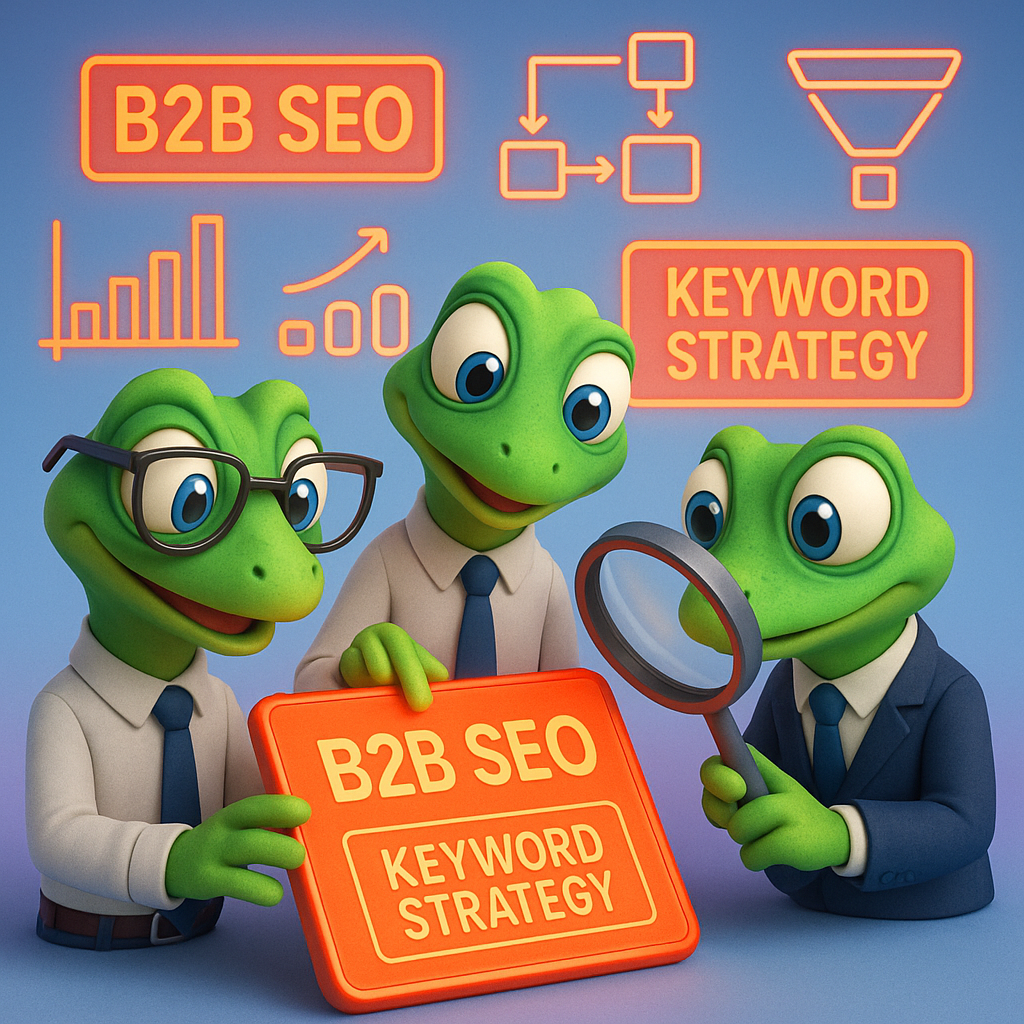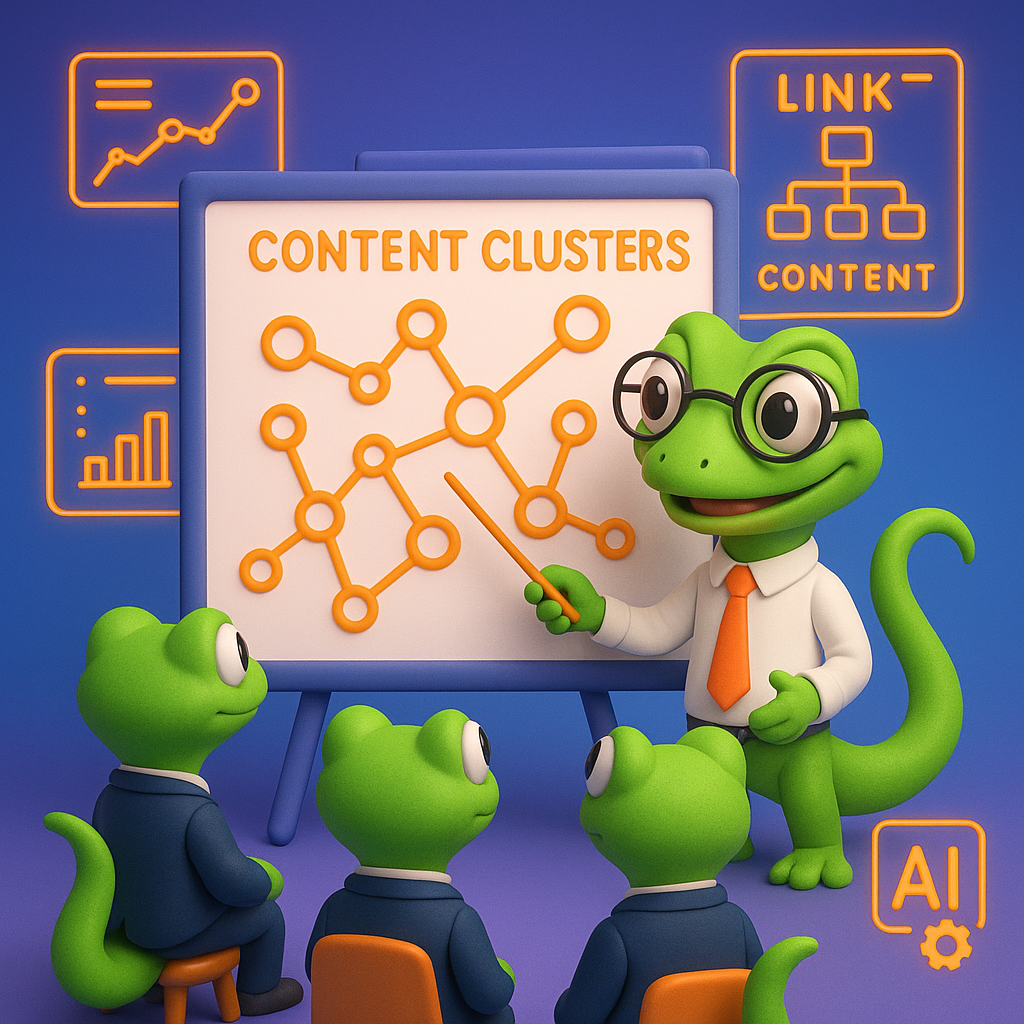SEO for B2B companies best practices for marketing leaders
B2B SEO is fundamentally different from B2C approaches. While consumer-focused SEO targets high-volume keywords and quick conversions, B2B strategies must navigate longer sales cycles, multiple decision-makers, and complex purchase journeys. This guide covers effective SEO strategies tailored specifically for B2B marketing leaders.
What is B2B SEO and why it matters
B2B SEO focuses on optimizing your digital presence to attract qualified business leads rather than individual consumers. It’s particularly valuable because 66% of B2B buyers use search as their primary discovery method, and they conduct an average of 12+ searches before visiting a vendor’s website.
Unlike broader consumer SEO, B2B strategies target specific decision-makers with technical, solution-oriented content. With SEO-driven leads showing 15% close rates compared to just 2% for cold calling, a targeted B2B SEO strategy delivers measurable ROI that justifies the investment.

B2B vs B2C SEO: Key differences
| B2B SEO | B2C SEO |
|---|---|
| Targets technical decision-makers | Targets individual consumers |
| Longer sales cycles (3-12+ months) | Shorter purchase decisions |
| Focus on complex solutions and ROI | Focus on benefits and emotions |
| Multiple stakeholders (7+ on average) | Single or dual decision-makers |
| Technical, in-depth content | Accessible, lifestyle content |
| Lower search volume, higher value | Higher search volume, lower value |
These fundamental differences require a completely different approach. While B2C marketers might celebrate driving thousands of visitors to a product page, B2B marketers know that a single qualified lead from a high-intent search can be worth tens of thousands in potential revenue.
Effective B2B keyword selection tactics
Focus on commercial intent
B2B keywords must capture prospects with purchase intent rather than just information seekers. Target terms that signal a business is actively exploring solutions:
- Comparisons: “enterprise CRM software pricing”
- Solution-focused: “B2B marketing automation solutions”
- Problem-specific: “reduce customer acquisition costs”
For example, a term like “best enterprise email marketing platform” indicates a business evaluating options, while “email marketing” alone might attract students, hobbyists, or early-stage researchers who aren’t ready to buy.
Prioritize strategic long-tail keywords
The sweet spot for B2B SEO is targeting terms with 500-1,000 monthly searches and manageable difficulty. These keywords balance opportunity with competition:
- Industry-specific terminology: “lead scoring software”
- Niche solutions: “AI-powered content optimization for SaaS”
- Technical specifications: “HIPAA-compliant CRM systems”
While these terms have lower search volume, they typically convert at 3-5x the rate of broader terms, making them far more valuable for your business.
Conduct competitor gap analysis
Using tools like ContentGecko, identify keywords your competitors rank for but where their content lacks depth. Case studies show companies gaining 2,172+ monthly clicks through strategic gap exploitation.
This approach is particularly effective in B2B where competitors often create shallow content covering many topics. By creating authoritative, in-depth content on specific topics they’ve only superficially addressed, you can quickly gain ranking advantages.
Implement keyword clustering
Group related terms using a free keyword clustering tool to build topical authority and prevent cannibalization. For example, cluster terms like “content optimization software” and “SEO tools” to strengthen overall domain authority.
Effective clustering helps search engines understand your site’s topical expertise. A medical software company might cluster terms around “electronic health records,” “HIPAA compliance software,” and “patient portal solutions” rather than creating separate pages for dozens of closely related terms.
Content optimization strategies for B2B audiences
Create strategic topic clusters
Organize content around core themes (pillar content) with supporting articles that link back to establish topical relevance. Companies using this approach have seen 46% increases in topical relevance and rankings for 468+ keywords in competitive niches.
Consider this example structure for a marketing automation company:
- Pillar page: “B2B Marketing Automation Guide”
- Cluster topics:
- “Email automation workflows for lead nurturing”
- “Marketing automation integration with CRM systems”
- “ROI measurement for marketing automation”
- “Lead scoring models for B2B companies”
Each cluster topic links back to the pillar, creating a network of related content that strengthens overall authority.

Align content with the B2B sales funnel
Different content formats serve different stages of the buying journey:
- Awareness: Educational blog posts, market research reports
- Consideration: Case studies, comparison guides, webinars
- Decision: Product demos, pricing guides, implementation roadmaps
According to research, 54.5% of B2B companies plan to increase content budgets specifically for these formats, recognizing their effectiveness in nurturing leads.
Take a cybersecurity company as an example:
- Awareness: “The State of Ransomware in Healthcare: 2024 Report”
- Consideration: “Case Study: How Memorial Hospital Reduced Security Incidents by 73%”
- Decision: “Implementation Guide: Deploying Zero-Trust Architecture in 90 Days”
Optimize for technical depth
B2B decision-makers expect expertise. Your content should:
- Use appropriate industry terminology
- Include specific technical details
- Provide actionable insights backed by data
- Reference credible sources and research
A website content audit can help identify gaps in your technical content depth. The goal isn’t to be technical for its own sake, but to demonstrate genuine expertise that builds trust with sophisticated buyers.
For example, a cloud infrastructure article shouldn’t just mention “high availability” but should explain specific redundancy mechanisms, failover protocols, and reference uptime statistics with real SLA guarantees.
Balance technical with readability
While technical accuracy matters, avoid overwhelming readers. ContentGecko’s analysis found the most effective B2B content maintains:
- Clear structure with subheadings
- Short paragraphs (3-4 sentences)
- Bullet points for complex information
- Business-casual writing style that’s professional but approachable
The most successful B2B content strikes a balance between demonstrating expertise and making information accessible. Think of how the best professors make complex topics understandable without oversimplifying them.
Leveraging AI for B2B SEO success
AI-powered keyword research
Modern AI tools can identify high-value B2B keywords by analyzing:
- Search intent patterns across industries
- Competitor content gaps and weaknesses
- Emerging trends and terminology
- Question formats used by business buyers
These insights help marketing teams prioritize content investments more effectively. For instance, AI might identify that while competitors focus on “cloud security solutions,” they’re neglecting the more specific “multi-cloud security governance” searches that show higher purchase intent.
Content optimization at scale
With 39% of B2B marketers investing in AI for content optimization, tools like content writer generators provide competitive advantages:
- Create and optimize technical content faster
- Ensure consistent keyword usage and density
- Generate data-backed insights automatically
- Maintain content freshness with regular updates
The real power comes not from replacing human writers, but augmenting them—helping subject matter experts produce more content without sacrificing quality. This is especially valuable in B2B where technical expertise is often limited to a few key individuals.
Performance tracking and adaptation
AI-powered analytics help B2B marketers understand:
- Which content pieces drive qualified leads
- How content performance correlates with sales outcomes
- What adjustments can improve conversion rates
- When content requires refreshing or updating
This closed-loop approach ensures continuous improvement in your SEO strategy. For example, AI analysis might reveal that visitors from a particular content piece are spending more time on your site and requesting demos at a higher rate, suggesting similar topics to expand upon.
Technical SEO considerations for B2B websites
Site architecture for complex products
B2B websites often feature complex product ecosystems. Organize your site architecture to:
- Create clear category hierarchies
- Establish logical URL structures
- Implement breadcrumb navigation
- Build internal linking between related solutions
For example, an enterprise software company might structure their site like:
/products/ /products/crm/ /products/crm/sales-automation/ /products/crm/customer-support/ /products/marketing-automation/ /products/marketing-automation/email/ /products/marketing-automation/social/This clear hierarchy helps both users and search engines understand the relationships between products.
Mobile optimization
Despite B2B’s desktop-heavy reputation, mobile SEO remains critical as 75% of B2B buyers research on mobile before making offline purchases. Ensure your site offers:
- Responsive design
- Fast loading (under 3 seconds)
- Touch-friendly navigation
- Readable text without zooming
Consider that many decision-makers do initial research during commutes or outside office hours. If your content isn’t mobile-friendly, you might lose them before they ever reach their desktop.
Schema markup for B2B
Implement structured data to enhance your SERP presence:
- Organization schema for company information
- Product schema for solution details
- FAQ schema for common questions
- Review schema for testimonials and case studies
Schema helps search engines understand your content better and can lead to enhanced SERP features. For B2B companies, FAQ schema is particularly valuable as it allows you to capture more SERP real estate for complex solution questions.
Measuring B2B SEO success
Key performance indicators
Track these metrics to gauge B2B SEO effectiveness:
- Organic traffic growth from target keywords
- Traffic-to-lead conversion rates
- Lead quality scores
- Customer acquisition costs
- SEO-influenced revenue
Use an SEO ROI calculator to quantify the business impact of your efforts. Traditional SEO metrics like rankings and traffic are useful indicators, but B2B success ultimately comes down to lead quality and revenue generation.
For example, a 10% increase in traffic that generates 30% more qualified leads is far more valuable than a 50% traffic increase with no improvement in lead quality.
Content performance analysis
Regularly conduct content gap analysis to identify:
- High-performing content that can be repurposed
- Underperforming content needing optimization
- Missing topics that competitors rank for
- New opportunities based on industry trends
This ongoing analysis helps you maintain a competitive edge. For instance, you might find that a technical whitepaper is driving significant leads but is now two years old. Updating it with current data and re-promoting it could yield significant returns with minimal effort.
Building a comprehensive B2B SEO strategy
A complete B2B SEO strategy requires:
- In-depth audience research: Develop detailed buyer personas for each decision-maker in your purchase process
- Competitive analysis: Identify strengths and weaknesses in competitor strategies
- Keyword mapping: Align target keywords with specific pages and content pieces
- Content calendar: Plan regular content creation addressing each funnel stage
- Technical SEO audit: Ensure your site architecture supports your business goals
- Measurement framework: Establish KPIs that connect to business outcomes
Use automated SEO tools to streamline implementation and track progress. The key is approaching SEO not as a separate marketing channel, but as an integrated part of your overall B2B marketing strategy that supports both brand building and lead generation.
TL;DR
Effective B2B SEO requires a fundamentally different approach than B2C strategies. Focus on commercial-intent keywords, create technically rich content aligned with the sales funnel, and leverage AI tools like ContentGecko to scale your efforts. Measure success through lead quality and revenue impact rather than just traffic metrics. With 81% of B2B companies investing at least $7,500 monthly in SEO, a strategic approach is essential for staying competitive in the increasingly digital B2B marketplace.
